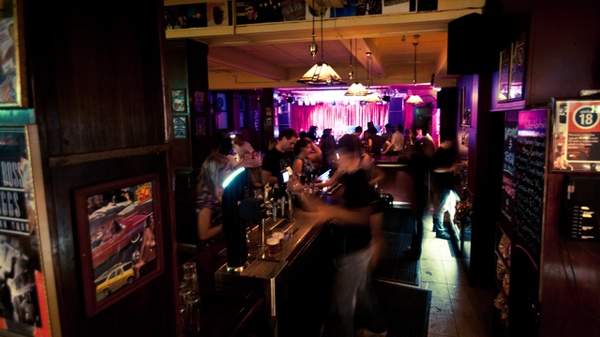Overview
Last Friday, as you may well have heard, somebody set the Lansdowne Hotel on fire. Most Sydneysiders will be familiar with the Landsdowne. It’s the neon-lit three-storey art deco hotel on the corner of Broadway and City Road, overlooking Victoria Park, which is always open when everything else is closed. It's sleazy, and the clientele are scruffy, and it has been beloved of every University of Sydney student and every local criminal and eccentric for well over a hundred years.
And there it was, burning down.
If you've driven through Chippendale since Friday, you'll have realised it hasn't, in fact, burnt down. Rather, a fire started on the third floor, forcing the hotel guests to evacuate, closing City Road for most of the morning, and closing the pub until, well, further notice. But the spectre of the end of the Lansdowne upset not just me but also many people I know and many more I’ve never met. In a strange way it burrowed its way into our hearts over the years, and we realised for a few moments that we would feel lost without it.
Conversations with friends that night revealed a particular pattern to individual histories of the Lansdowne. While they might have tried to put in a velvet lounge or two and introduce (very decent) band nights over the last couple of years, most of the stories of the Lansdowne I heard began or ended with heady, fuzzy alcohol-soaked staggers through the open doors in the wee hours of the morning. There were stories of arguing with the bartender over the price of beer, of people making out clumsily on the couches, of untidy break-ups, of punch-ups, and of impromptu dancing on tables. It's rarely a destination in and of itself. Rather, it is the beloved pub of last resort, eternally reliable in all its sleazy neon grandeur at the intersection of two busy roads.
A little bit of research reveals the Lansdowne has probably always been that way. The current incarnation has been around since 1933, a stalwart of Chippendale well before anybody could even conceive of it being included in a list of Australia’s 'hippest' suburbs. For most of its existence, Chippendale has been a violent, drunken slum, home to criminals, gamblers, and prostitutes, and then, over the years, the equally questionable musicians, students, and communists. The people who lived there were overwhelmingly poor, and the combination of factory poisons, sewerage, and the reek of the brewery in the air made it a generally unpleasant place to live.
The Lansdowne, true to the grimness of the neighbourhood, was nearly always sleazy. While the Temperance Unions won a small victory in the early 20th century with the introduction of six o'clock closing times (with the aim of sending men home to their families instead of the warm embrace of a bottle of whisky), it instead marked the beginning of Sydney's much-maligned binge drinking culture. The six o'clock swill saw men flood the Lansdowne to get as much drink into them before closing time as they were physically able. The Lansdowne became a kind of feeding trough between the hours of four and six, where the long bars had a trough at the base for the men to piss in as they stood. Tiled walls were also introduced. Not for any aesthetic appeal; rather, they were easier to hose the vomit off of.
Like all inner-Sydney pubs, it was a place where men went to escape, and any woman who did walk into the Lansdowne wasn't somebody likely to be too worried about her reputation. It was somewhere bookmakers and standover men hassled 'sly-groggers', prostitutes, or anybody who looked at them in a 'funny' way. During the 1930s Kate Leigh, of Underbelly fame, had a slew of standover men who would frequent pubs, including the Lansdowne, to buy the booze she would sell on the sly. One of her men, Chow Hayes, finding he had been replaced while he'd been in prison, wandered into the Lansdowne one night to locate the man who'd replaced him. He invited him outside, and he shot him.
The Lansdowne continued to be sleazy and rough well past the Razor Gangs, with one of Sydney's most renowned hit men Mr Rent-A-Kill, also a frequent patron. Yet it was also the occasional drinking hole of the Sydney Push, who had amongst their number Germaine Greer, Frank Moorehouse, and Lilian Roxon and were infamously described by Barry Humphries as "a fraternity of middle-class desperates, journalists, drop-out academics, gamblers and poets manques, and their doxies". In the '80s and '90s, the Lansdowne also became one of the first venues bands were likely to play in their early careers, hosting gigs by the likes of You Am I, Peabody, The Go-Betweens, and Died Pretty.
When they renovated the Lansdowne a few years ago, they made the downstairs bar airier and brighter and got rid of the cheap meals to replace them with slightly less-cheap meals. Yet for all of that, it maintains the atmosphere of its many years of questionable history. It's probably fair to say that Sydney would in many ways be bereft without places like the Lansdowne, even though they don't necessarily make us look our glittering best. That’s where the attraction lies, and that's why we are very thankful that the Lansdowne did not, in the end, burn down last week.
